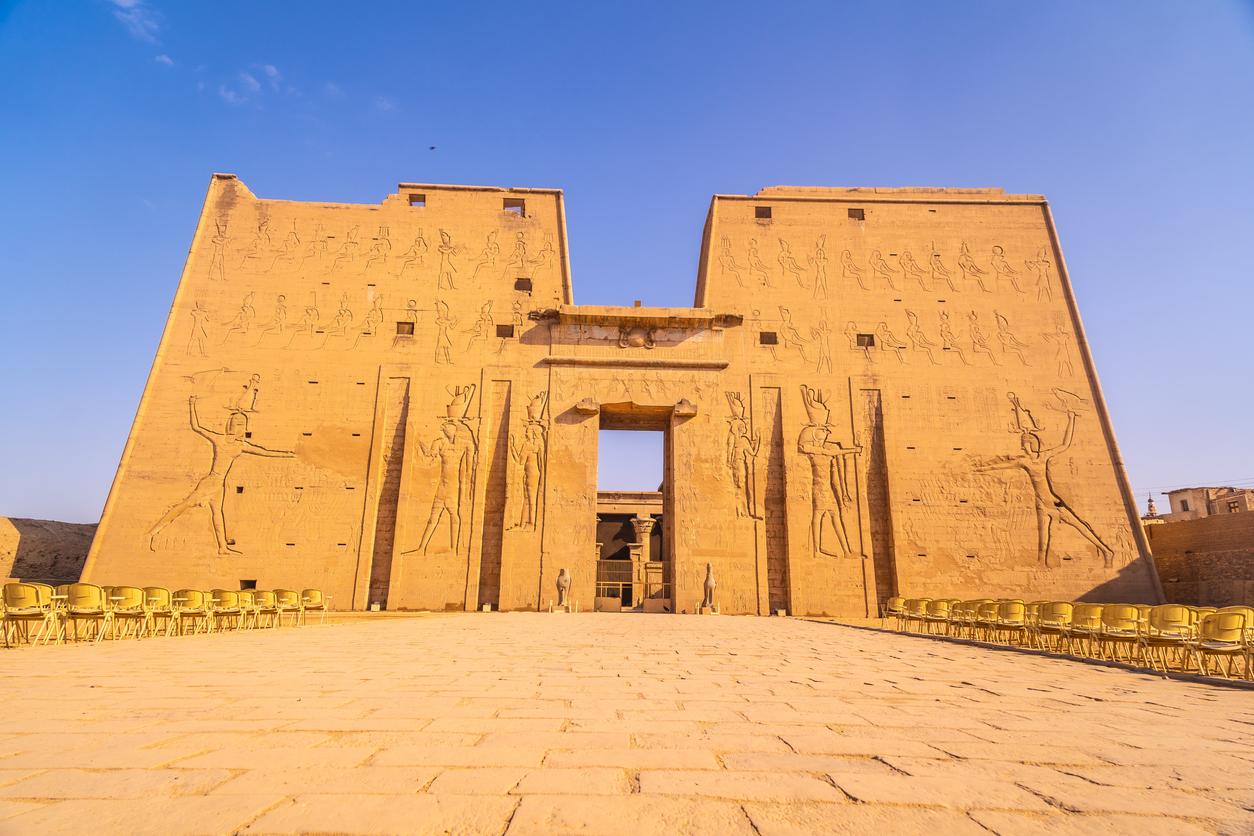
The Temple of Edfu also know (Temple of Horus) stands as one of the most well-preserved ancient monuments in Egypt, offering a fascinating glimpse into the grandeur of ancient Egyptian civilization. Dedicated to the falcon god Horus, this temple is a remarkable testament to the architectural and cultural prowess of the Ptolemaic dynasty. It provides modern visitors with an unparalleled look into the spiritual and societal practices of the time.
The Temple of Edfu, built between 237 and 57 BCE during Ptolemaic rule, showcases a blend of Greek and Egyptian styles. It was central to religious ceremonies, with walls covered in detailed carvings depicting myths, rituals, and history, making it both a sacred site and a valuable record of ancient Egypt.
The Temple of Edfu is on the west bank of the Nile in the town of Edfu, between Aswan and Luxor. This strategic spot made it an important religious and trade center in ancient times. Today, it’s easily accessible by road, rail, tours, or Nile cruises. The scenic journey offers views of the Nile Valley and traditional villages. Visitors can arrive by boat or land, with the temple’s towering pylon making a memorable first impression.
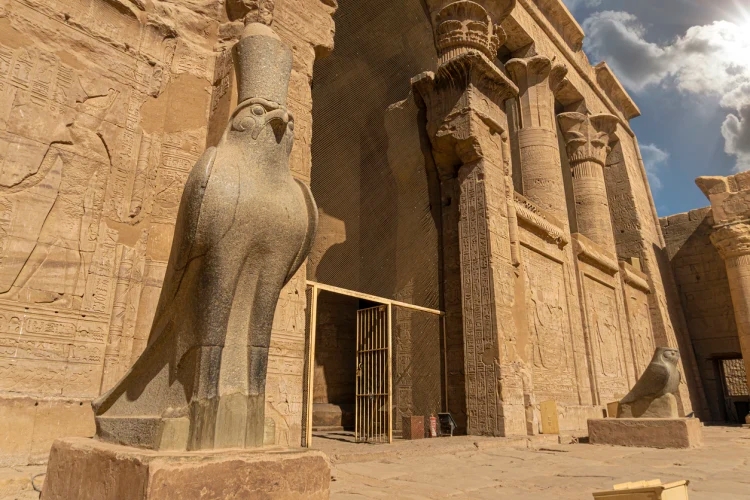
The Temple of Edfu holds immense historical significance, serving as a vital link to understanding ancient Egyptian religion and society. It was dedicated to Horus, the god of the sky and kingship, who was one of the most important deities in the Egyptian pantheon. The temple was a center for worship and pilgrimage, attracting devotees from across the region who sought blessings and guidance from the god.
Built between Ptolemy III and Ptolemy XII’s reigns, the Temple of Edfu symbolizes the Ptolemaic dynasty’s stability and cultural flourishing. Its inscriptions reveal valuable insights into the era’s religion, politics, and daily life in ancient Egypt.
The Temple of Edfu depicts the legendary battle between Horus and Seth, symbolizing good versus evil. These detailed wall carvings offer rich religious symbolism, helping historians understand ancient Egypt’s cultural and spiritual beliefs.
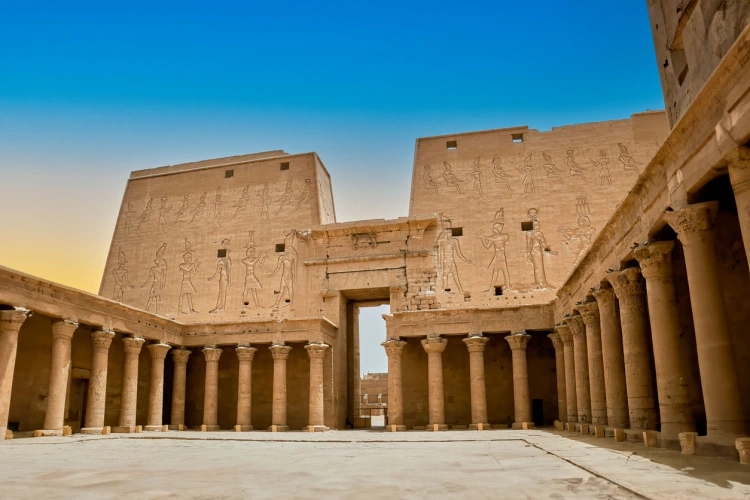
The architecture of the Temple of Edfu is a magnificent example of the Ptolemaic temple design, characterized by its massive scale, symmetrical layout, and intricate detailing. The temple complex covers an area of approximately 40,000 square meters and is surrounded by a high mudbrick enclosure wall, which served to protect the sacred space from the outside world.
The Temple of Edfu’s grand entrance features a 36-meter-high pylon adorned with reliefs of Ptolemaic kings offering to the gods, blending power and devotion. Beyond it lies a large open courtyard once used for ceremonies. Inside, a series of halls leads to the sanctuary, which holds a replica of Horus’s sacred bark. The walls and columns are richly decorated with carvings and hieroglyphs depicting Horus myths, rituals, and offerings. Light and shadow enhance the temple’s mystical, spiritual atmosphere.
Visitors to the Temple of Edfu will find numerous highlights and features that capture the imagination and reveal the temple's rich history. One of the most prominent features is the Great Hypostyle Hall, which contains 12 towering columns intricately decorated with floral and geometric patterns. This hall served as a transition space between the outer courtyard and the inner sanctum, symbolizing the journey from the earthly realm to the divine.
The temple's carvings depict the Festival of the Beautiful Meeting, where Hathor joined Horus, symbolizing divine union and revealing ancient Egypt’s rich ceremonial traditions.
The Temple of Edfu features the Birth House (mammisi), a chapel honoring Horus’s divine birth. Decorated with scenes of his childhood, it reflects the temple’s role in renewal and highlights mythology’s key place in ancient Egyptian culture.
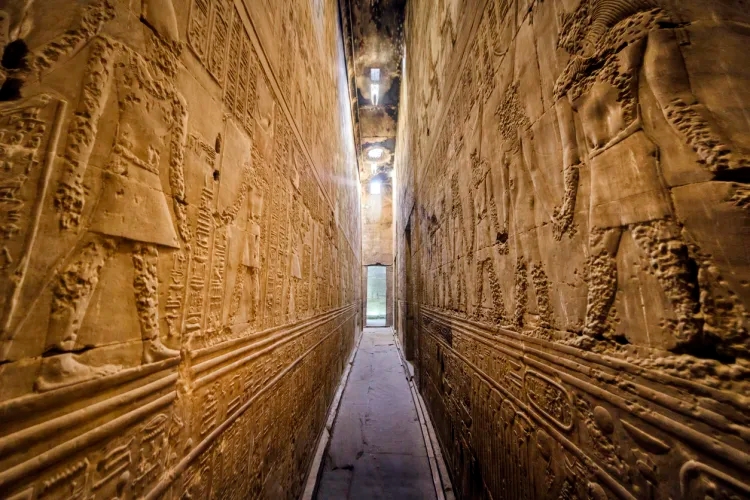
For those planning to visit the Temple of Edfu, a well-organized travel guide can enhance the experience and ensure a memorable journey. The temple is open to visitors year-round, with opening hours typically from early morning until late afternoon. It's advisable to check the current visiting hours and any special events or closures before planning your trip. Many Egypt Tours include Edfu in their itineraries, making it easy to explore this iconic site as part of a broader cultural adventure.
To fully appreciate the Temple of Edfu, consider a guided tour or audio guide for deeper insight into its rich reliefs and history. Dress comfortably and prepare for the weather, bring a hat, sunscreen, and water, especially in hot months. Comfortable shoes are essential for walking on uneven surfaces and steps.
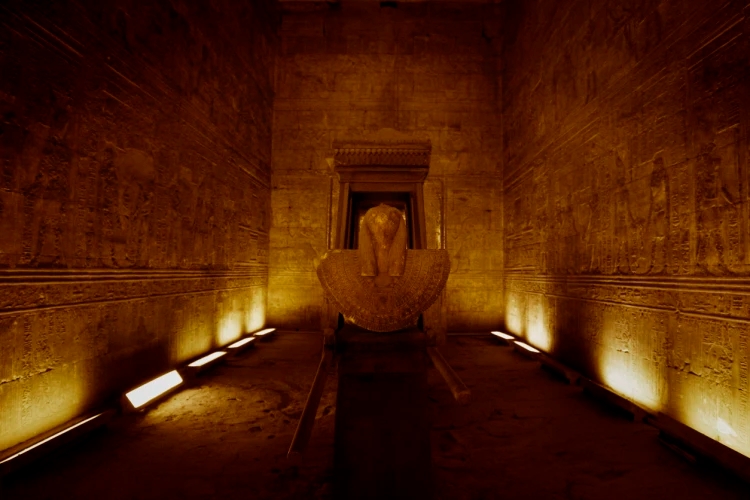
The best time to visit the Temple of Edfu is during the cooler months, from October to April, when temperatures are more moderate and comfortable for outdoor exploration. During this period, daytime temperatures range from 20 to 30 degrees Celsius, making it ideal for sightseeing and photography without the intense heat of the summer months.
Visit the Temple of Edfu in the early morning or late afternoon for soft light and fewer crowds. Peak hours can get busy with tours. In August, the site holds special meaning during the Festival of the Beautiful Meeting, celebrating Horus and Hathor’s union, adding cultural depth to your visit.
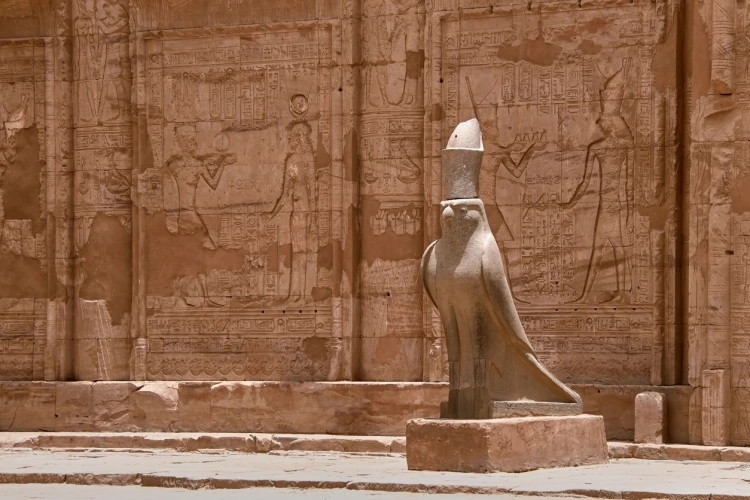
While the Temple of Edfu is a highlight of any visit to the region, there are several other attractions nearby that are worth exploring. These sites offer additional insights into the rich history and culture of Upper Egypt:
1. Temple of Kom Ombo: Located just a short distance from Edfu, this unique temple is dedicated to both the crocodile god Sobek and the falcon god Horus. The temple's symmetrical design and dual dedication offer a fascinating glimpse into ancient Egyptian beliefs.
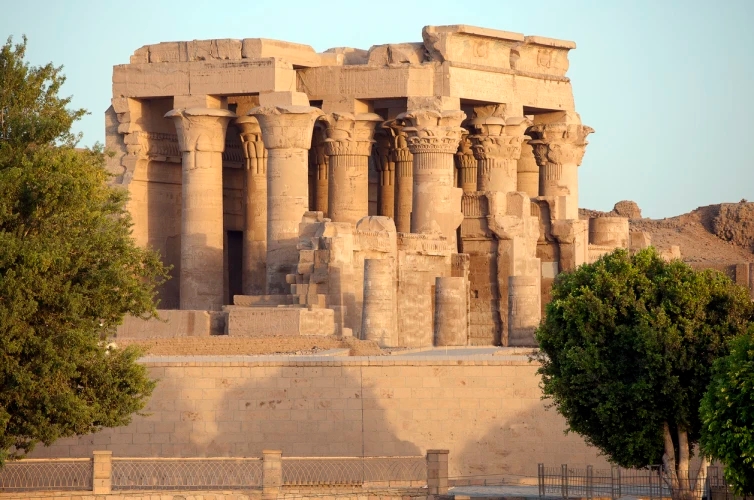
2. Temple of Dendera: Dedicated to the goddess Hathor, this temple is known for its beautifully preserved ceiling carvings and vibrant colors. The Temple of Dendera is one of the most well-preserved temple complexes in Egypt and offers a complementary experience to the Temple of Edfu.
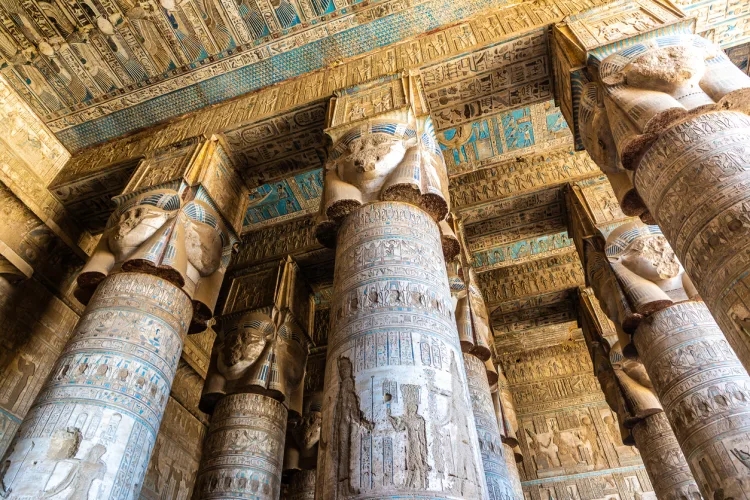
3. Luxor: A short journey from Edfu, the city of Luxor is home to some of the most famous archaeological sites in Egypt, including the Karnak Temple Complex and the Valley of the Kings. A visit to Luxor can provide a more comprehensive understanding of ancient Egyptian civilization.
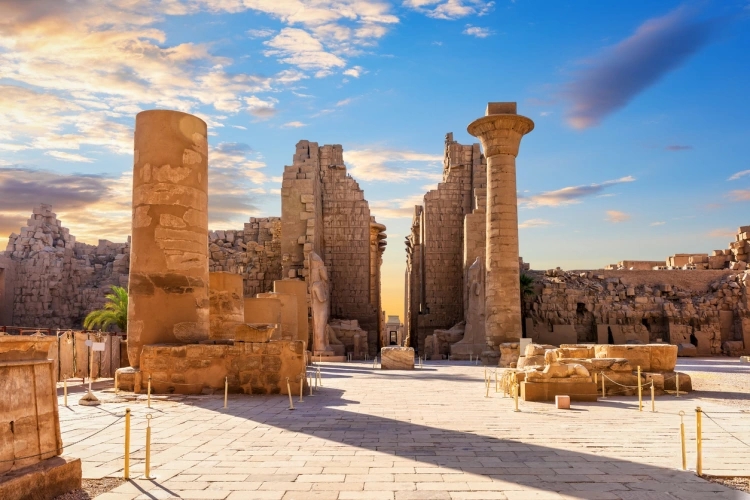
4. Nile River Cruises: Consider taking a Nile River cruise that includes a stop at Edfu. These cruises offer a relaxing and scenic way to explore the region, with the added benefit of guided tours and comfortable accommodations.

The Temple of Edfu is a must-visit destination for anyone interested in ancient history, architecture, and culture. Its remarkable state of preservation, combined with its rich historical and religious significance, makes it an essential stop on any tour of Egypt. The temple offers visitors a unique opportunity to step back in time and experience the grandeur and spirituality of ancient Egypt firsthand.
Q1. What is the Temple of Edfu?
The Temple of Edfu is one of the best-preserved ancient temples in Egypt, dedicated to the falcon god Horus. It was built during the Ptolemaic period.
Q2. Where is the Temple of Edfu located?
It is located in the town of Edfu on the west bank of the Nile River, between Luxor and Aswan in Upper Egypt.
Q3. What is special about the Temple of Edfu?
Its impressive preservation, massive pylon entrance, detailed carvings, and inscriptions make it a key site for understanding ancient Egyptian religion and daily life.
Q4. Can I visit the Temple of Edfu on a Nile cruise?
Yes! Most Nile cruises between Luxor and Aswan include a stop at Edfu, and visitors often reach the temple by horse-drawn carriage or minibus.
Q5. Are guided tours available at the Temple of Edfu?
Yes, guided tours and audio guides are available to help visitors understand the temple’s history, architecture, and religious significance.
Q6. What are the opening hours of the Temple of Edfu?
The temple is generally open daily from around 8:00 AM to 5:00 PM, but it’s best to confirm locally or with your tour provider.
Q7. What should I bring when visiting the Temple of Edfu?
Comfortable shoes, water, sunscreen, and a hat are recommended, especially during hot months. Photography is allowed, but flash may be restricted.
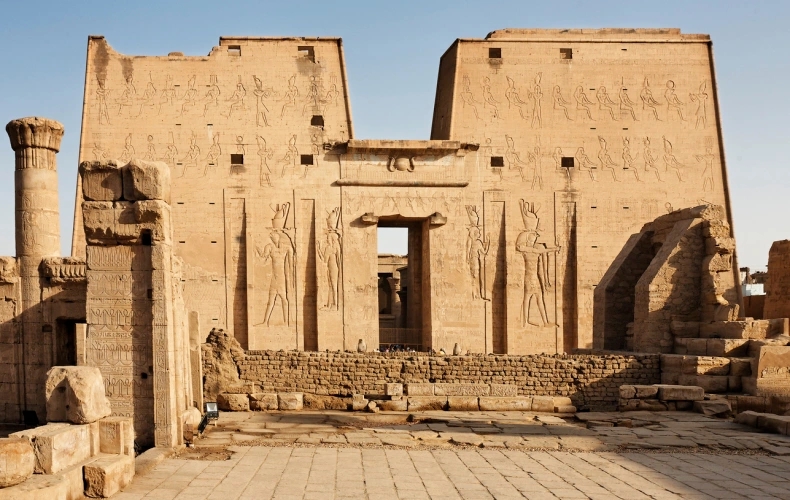

© Copyright 2025 Get Egypt Tour. All rights reserved.